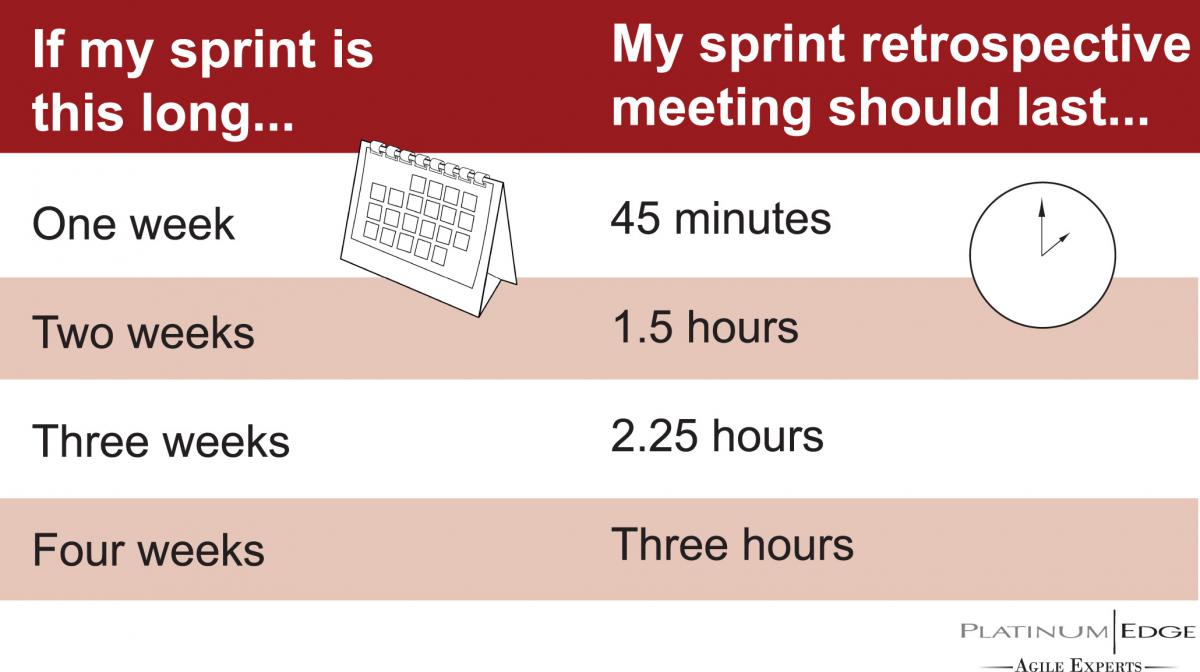
Agile project management is an inspect and adapt approach. This means that agile processes don’t just encourage, but require you to regularly stop what you are doing, assess where you are and find ways to improve the rest of your journey toward the project goal. The last of the 12 Agile Principles clearly spells out this necessity. No matter how good your scrum team is, there are always ways to improve.
Together with the sprint review, the sprint retrospective represents the core of this feedback loop in scrum. The retrospective, in particular, focuses on addressing process and team improvements – the how-we-work-together.

The retrospective takes place at the end of every sprint, after the sprint review. The meeting should last no more than 45 minutes for each week of sprint duration.
During the retrospective, the entire scrum team, including the product owner and the scrum master come together to discuss three questions:
- What went well?
- What would we like to change?
- How can we implement that change?
Some teams can have problems opening up. This is often the case with new teams. In this case, it is the scrum master’s role to ask the right questions to start and facilitate the discussion. Asking socriatic, open-ended questions and avoiding “why?” questions, can be particularly helpful in situations like these.
When discussing the answers to these questions, it is important to stick to outcomes in the form of action points. Write them down. As soon as the team is finished compiling an initial list they will decide which problems to tackle. A good way to decide is to order issues by the impact they have on the development team as a whole. This enables the team to choose which issues to focus on first. If there are any problems that you can immediately resolve by altering team agreements or the definition of done, you should do so. Finally, be careful to stay focused and not to take on too many issues at once.
Most teams start the next sprint’s retrospective by quickly revisiting the status of their past issues.
Recognizing things that had a positive impact and continuously improving processes is a great way to improve team morale. Done correctly, you should see immediate improvements in the team’s efficiency, with a positive spill-over effect on the project. In the long-term you can also reap the benefits of increased staff retention rates.
For more information on the different kinds of Agile Project Activities go to our previous blog post.

